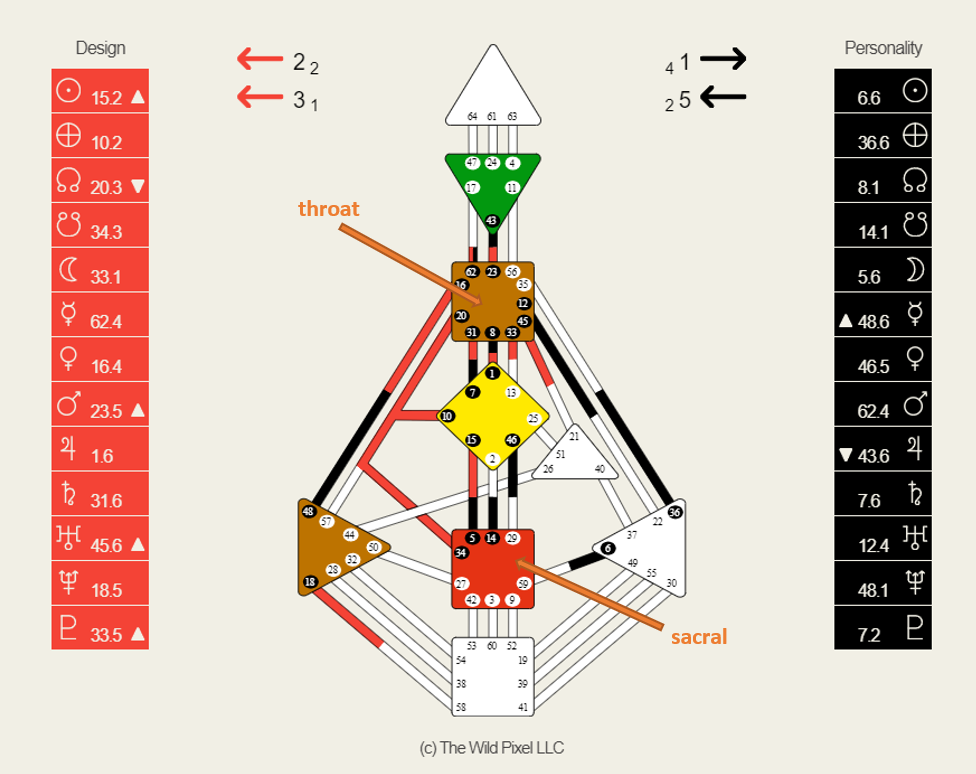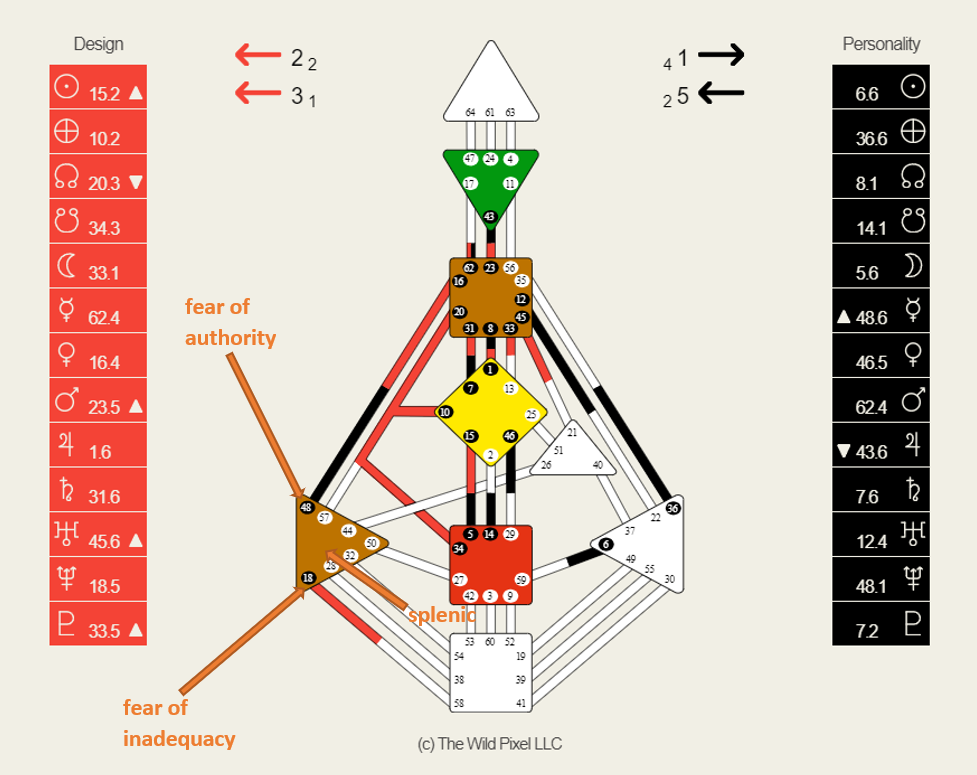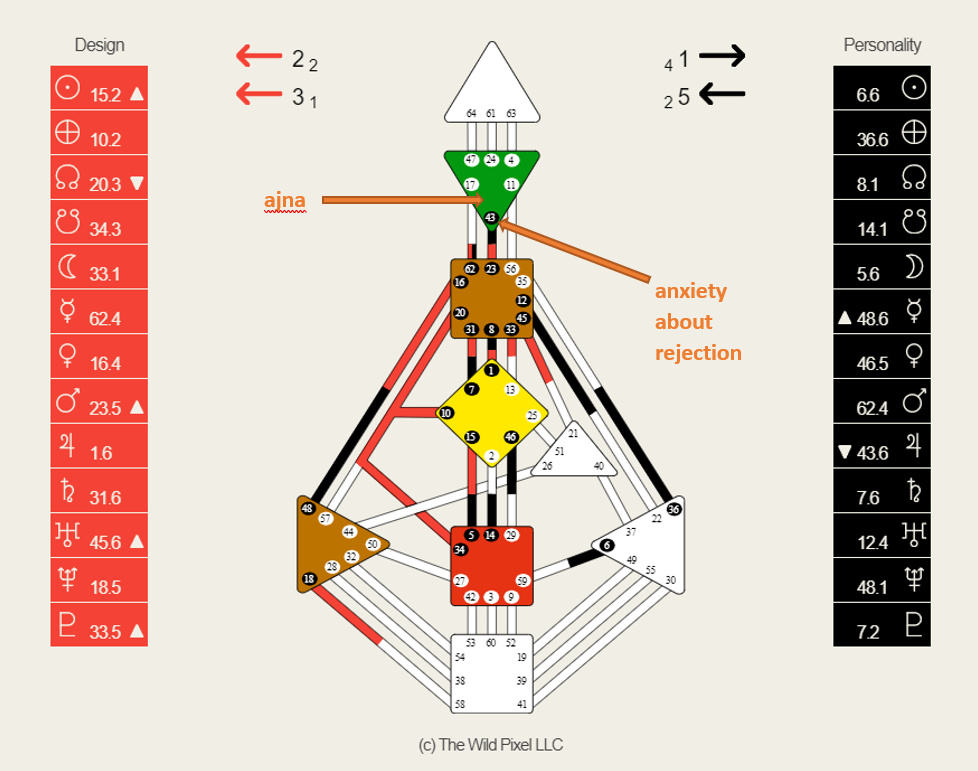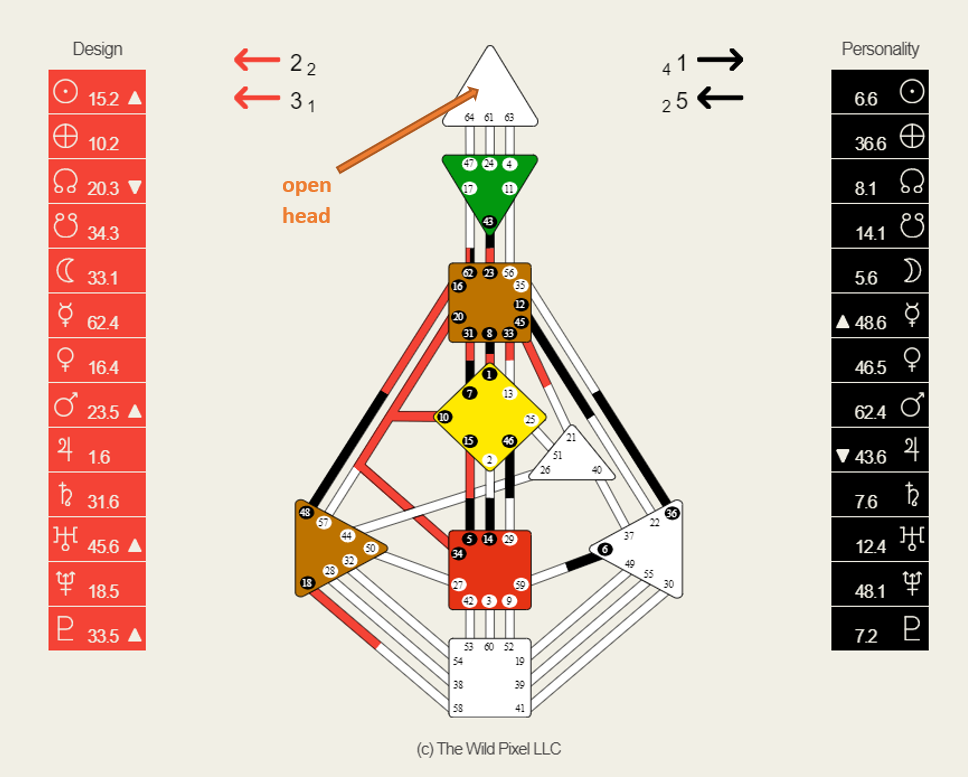Stephen King's Human Design Fear Chart
Halloween is coming up, so we gotta read Stephen King's Human Design chart. My introduction to Stephen King was The Girl Who Loved Tom Gordon. I read it in two sittings - yes, it was that good, but I was also jetlagged after flying back to Staten Island from Malaysia.
I love the book because it's unsettling. It's about a nine-year-old girl who gets lost in the woods and pushes to survive hunger, dehydration, and shitty weather to the point of hallucination.
The plot is more terrifying now because I'm a mother to a ten-year-old.
I'll never reread the book.
Stephen King's journey to being the legendary horror writer began with back-to-back rejection letters. Human Design addresses navigating rejection, so I needed to see what was in his fear chart after I read his memoir.
Bam. There's the fear of rejection right in his chart.
But we know that rejection didn't stop him from writing. I mean, his kinda-memoir, On Writing, is sitting a foot away from my hand as I type.
In this post, I'm only concerned about the fear gates in his chart. To set the stage, I'll touch on his type and authority as the opening act.
⚠️ Trigger warning: This post touches on and speaks on topics including:
Substance abuse in graphic detail (including alcoholism)
Suicide
✨ Important note: fear is a tool and guide. It can't be eradicated, just like you cannot change your type and authority. If it's in your chart, it's in your chart. However, how you work with your fear or experience fear will change.
📸 Image credits: Stephen King-related images are from Deposit Photos, used with a license.
Stephen King's Human Design: Sacral Manifesting Generator
Look at his chart below. The red square is the sacral center, and the brown square is his throat center. Since they're colored in, known as defined in Human Design, he's automatically a Manifesting Generator.
Every defined center in his chart has at least one channel that can be traced to his throat without lifting your pencil. He's got a lot going on there.
He's got a lot to say.
Manifesting Generators have the strategy of informing and waiting to respond. (Some chart calculators will only say responding while others say informing and responding.)
For example, a Mani Gen gets the idea to write a book on a rabid dog. He says, "I want to write a book about a rabid dog," where he informs his sacral about his intentions. The sacral center responds with an answer.
Another example is the Mani Gen's friend, a Projector, who says, "You should write a book." The Mani Gen's sacral center responds by informing, "Yes. I should write a book."
✨ Fun note: The sacral center's response is a grunting sound - like a toddler trying to communicate or the cranky uncle too drunk to form a sentence. It's a basic form of language. The Manifesting Generator adds a voice to the sacral response because the grunt travels up the sacral straight to the throat. Manifesting Generators tend to speak their response in sentences.
So Stephen King's strategy and authority is:
Being inspired by outside ideas.
Saying those ideas out loud and letting the sacral respond.
"Let's get one thing clear right now, shall we?
There is no Idea Dump, no Story Central, no Island of the Buried Bestsellers; good story ideas seem to come quite literally from nowhere, sailing at you right out of the empty sky: two previously unrelated ideas come together and make something new under the sun. Your job isn't to find these ideas but to recognize them when they show up."
- Stephen King, On Writing
Splenic Center: Fear of Authority and Inadequacy
The splenic center is primal fear, all about life and death. This is where we store ancestral traumas and cycles that determine whether you live or die.
Stephen King has a defined splenic center with gates 18 (fear of authority) and 48 (fear of inadequacy) activated.
Gate 18, fear of authority, is about the authority figure who is supposed to care for you. This could be a parent, teacher, guardian, etc. The fear here is that this authority doesn't have your best interests in mind. Stephen King's most notable authority figure in his childhood was his mother. She was a single mom who tried her best while Stephen and his brother, Dave, went through childhood to teenage shenanigans.
"Mom's an authority figure," the throat center informed.
"She has to take care of me because my antics could put me in danger," said the splenic fear of authority.
"She's trying. I don't feel in danger," the sacral center responded.
Gate 48, fear of inadequacy, is the ancient fear of having no choice but to die. It's to belly up in submission to your circumstances.
Tabitha King organized an intervention that began with her dumping a trashbag on the floor, consisting of beers, blood-caked coke spoons, Xanax, Robitussin, and even bottles of mouthwash. She gave Stephen the ultimatum: you can get sober or get out. She knew, and his splenic center knew he would die.
Still, his kneejerk reaction was to tell her she was wrong.
Stephen King took the romanticized route, the rite of passage writers crave. He knew the myth of how writers and artists wrapped themselves with psychedelics to coax the creativity out.
In On Writing, he notes:
"Substance-abusing writers are just substance abusers- common garden-variety drunks and druggies. Hemingway and Fitzgerald didn't drink because they were creative, alienated, or morally weak. They drank because it's what alkies are wired to do. Creative people probably do run a greater risk of alcoholism and addiction than those in other jobs, but so what? We all look pretty much the same when we're puking in the gutter."
The splenic center speaks "once." This is what we tell splenic authorities. It speaks "once" because intuition and instinct are moment-to-moment.
It's just a message. It's up to the human (and because we're talking Human Design, we can say the authority, too) to decide what comes next.
Stephen King's journey with the fear of inadequacy included his relationship with substance abuse. It wasn't an "Ah yes, I have a problem, and I shall get help now" realization– it never is when it comes to addicts.
So, if you go into Human Design with the mindset that you're trying to fix something, get ready for the stone-cold truth, especially if you're working with your splenic center.
In Stephen King's case, the arc looked like this:
"Stop using this shit or get out," said Tabitha. It stabbed Stephen's perceived inadequacy to work without clinging to what he was using.
"I need the dopamine to write," said Stephen King's splenic center, which clung to the dopamine as a method of survival.
"None of us will be a witness to your suicide," said Tabitha– using suicide as a trigger to wake up the splenic center.
"There's truth there. If I keep this up, I'll die," said the splenic center, which changed its decision "in the moment."
"You're right, splenic center," the sacral authority responds.
Ajna Center: Anxious About Rejection
The ajna center is usually the bad guy, but the splenic center gets all the flack. When people ask me how their splenic is processing their fear of starting a project, getting married, or experiencing imposter syndrome, the culprit is the ajna center.
Ajna's fears manifest as anxiety. These are the "what if" narratives that keep you up at night. It's making up scenarios that make the safe zone look like a permanent home. It has nothing to do with dying or directly working with other people. The ajna is the echo of the voices you replay in your head.
Stephen King has one anxiety-based fear in his chart: gate 43, anxiety over rejection.
Stephen King recalls the only personal response he got from Alfred Hitchcock's Mystery Magazine after eight years of rejected submissions.
It said, "Don't staple manuscripts. Loose pages plus paperclip equal correct way to submit a copy."
The book that launched Stephen King to stardom was Carrie. Yet he was the first person reject to it. He dumped the pages into the garbage. His wife, Tabitha, went through the trash, found the pages, and told him to finish it. When he did, Carrie got rejected at least thirty times before the story was picked up by publishing company Doubleday.
Now's a fun time to detour inside Stephen King's head center. It's open, meaning it's not colored in, and none of the numbers (gates) are activated. He's got nothing going on up there.
The head center is the center of inspiration, which means his ideas slap him in the face. It comes from somewhere, just not his head. Something hits him, and his strategy can inform and respond to it.
Note: this is not true for all Manifesting Generators, just the ones with the open head.
Fear as a Teacher
I tend to write in passive voice, and I overuse -ly. I'm obsessed with adverbs because, as King put it, I'm "fearful that [the reader] won't understand" what I want to get across. He also says writers who use passive voice are timid and play it safe.
Now that he puts it like that, I want to go through all my content and fix it.
I also have gate 43 in my chart but not a defined ajna. I experience anxiety about rejection sometimes.
This isn't a motivational post about beating or getting over fear as much as it's about using fear.
Fear's a teacher.
Fear's a creature.
I'll always have the fear of rejection in my chart. As I said, it's unable to change, just like my type and authority can't change.
But, I've gotten over specific fears related to rejection:
No one will like my writing because I never took a formal writing class.
Fear of speaking too much.
Offending others because I, a native New Yorker and veteran, say fuck more times in one day than the number of words in this post (I don't say it in my children's school or in public, but my blog, newsletter, and apartment are free game).
We need to split hairs here. I overcame those specific fears related to rejection, but the actual fear of rejection is permanent.
I felt it when I read Stephen King's criticisms of these forms of writing. That pang of anxiety asking:
What if writers read my content and judge me?
How long will it take for me to rewrite my whole website and blog?
Was I EVER a good writer?
I also felt the Projector strategy of being invited to study and refine the way I write. This is an invitation to work with anxiety about rejection.
So, we gotta split these hairs of working with fear versus trying to beat fear.
The fear gates you have in your chart are included in your lifetime. It's part of your purpose. Enjoy the chaos.
Learn more about the Gates of Fear by reading your Fear Chart
The Gates of Fear is a course that journeys you through the most personal, intimate, and vulnerable part of humanity: fear.
Each person enters this incarnation with a series of karmic cycles and contracts, some personal, some inherited from the bloodline, and some not meant for us at all. Yet, we bear the burdens through real or imagined obligations.
The Gates of Fear explores that terror through your Human Design chart.
$47 $19






